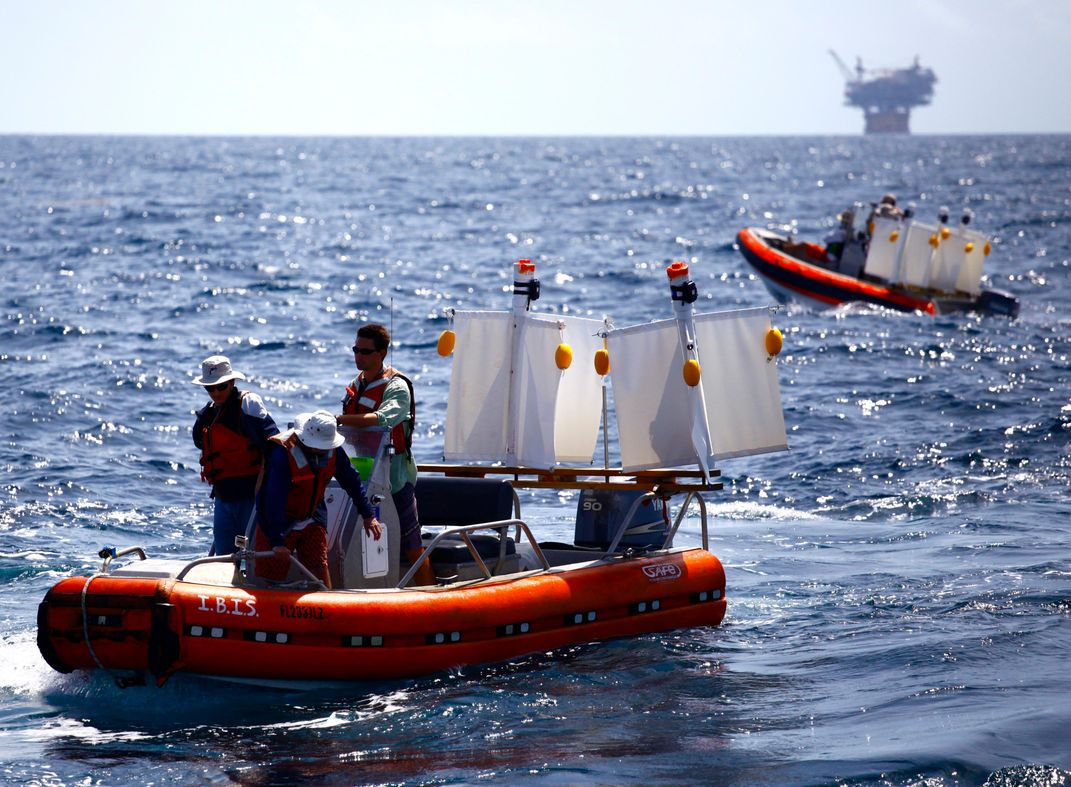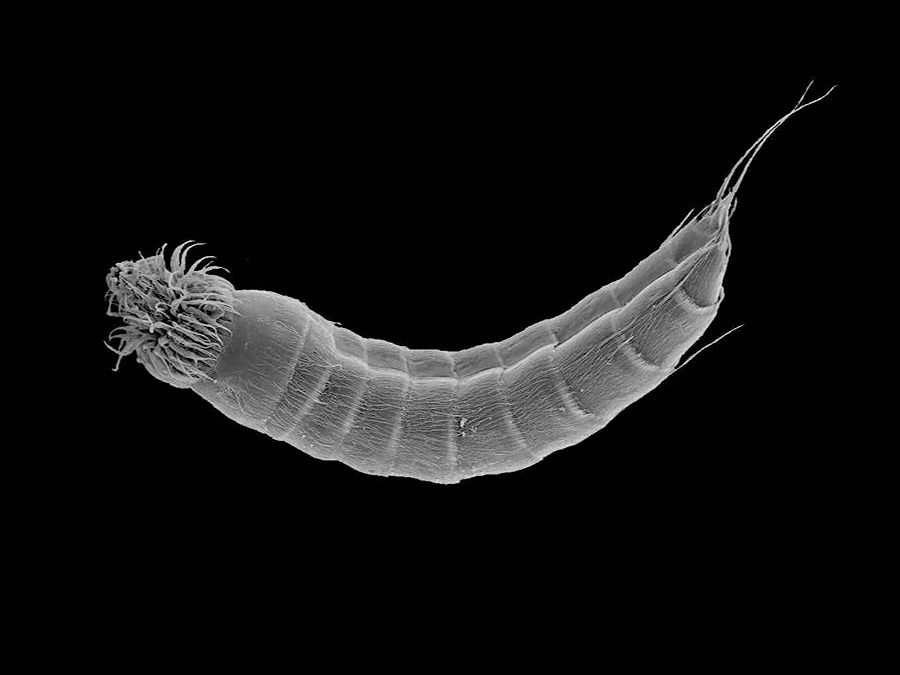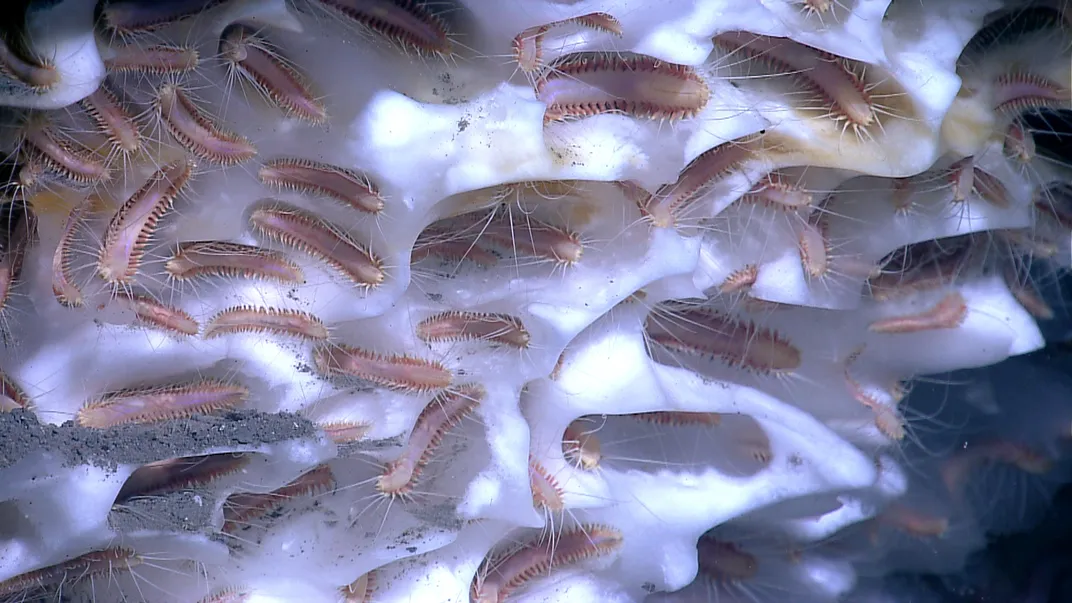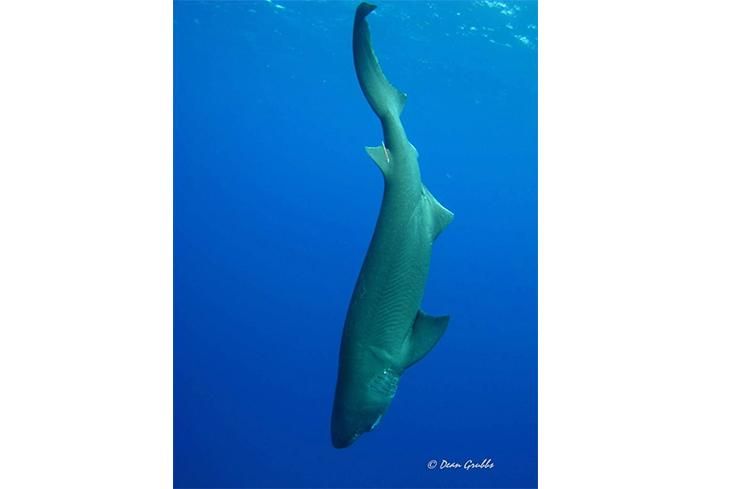Five Things The Gulf Oil Spill Has Taught Us About the Ocean
While researching the spill, scientists tracked deep-sea sharks, found new mud dragons, and discovered a type of ocean current
/https://tf-cmsv2-smithsonianmag-media.s3.amazonaws.com/filer/49/8a/498ac32c-80d0-4766-804f-1d844dae2dfd/42-48861125.jpg)
The 2010 Deepwater Horizon oil spill is considered the largest accidental marine spill in U.S. history and a disaster for human and non-human communities along the coast of the Gulf of Mexico. But the spill created an opportunity to rigorously study the effects of oil spills on the environment and public health, and to develop new technologies to fight future spills.
BP set aside $500 million to fund spill-related research, and for the past five years the independent Gulf of Mexico Research Initiative (GoMRI) has used that funding to support the research of more than 1,200 scientists.
Along the way, these researchers have made fundamental ocean science discoveries that otherwise may never have been known. Here are five of the most interesting ocean findings that have come out of Gulf oil spill research:
Never-Before-Seen Ocean Currents

Our understanding of ocean currents is limited by our tools, says Tamay Özgökmen, a physical oceanographer at the University of Miami. Our eyes can pick out small currents off the side of a boat, and satellites can identify large ones that are tens to hundreds of miles wide. But we don't have good tools for seeing currents that lie somewhere in the middle—around 300 feet to 6 miles wide—and they remain largely invisible.
Led by Özgökmen, the CARTHE team of oceanographers and engineers found a new tool during the Gulf spill: the oil slick itself. By some estimates, the slick covered almost 4,000 square miles by the end of April 2010. They carefully watched the slick spread across the ocean's surface, and they noticed that it didn't move in the way they suspected based on known currents. "We looked at many images of the oil spill, and it became clear to us that flows at the small scale were very influential on how this thing spread," Özgökmen says.
CARTHE researchers developed a suite of small, GPS-enabled ocean drifters that could be dropped into the Gulf and tracked by location. Their data confirmed the existence of these small currents, called sub-mesoscale currents. "This was a discovery, the first time that these currents have been measured," Özgökmen says. "People always suspected them, but they could never measure them because they required a huge number of drifters." The CARTHE team continues to develop cheap, compact, easy-to-build and biodegradable drifters that researchers can use to identify other small, local currents throughout the world.
A Tally of Gulf Critters

After the spill, one of the first questions asked was how it would affect animal populations in the Gulf and along the coast. People immediately worried about large charismatic animals like dolphins, pelicans and bluefin tuna, as we can easily see and empathize with their suffering. However, many of the abundant but less traditionally appealing animals, like insects and zooplankton, are just as crucial to these ecosystems, if not more so.
The spill gave researchers an opportunity to count and identify these tiny critters in the Gulf region, some for the very first time. Linda Hooper-Bui, an entomologist at Louisiana State University, studies insects and spiders, which play often unnoticed but important roles in coastal habitats, such as aerating and altering nutrients in soil, competing with crabs and other arthropods for food, transporting plant seeds and serving as food for songbirds and other animals. In the wake of the spill, Hooper-Bui studied the effects of stressors on insects and spiders in the marshes and coastal dunes fringing the Gulf of Mexico. One of those stressors is oil—but she has also been looking at flooding and storm surges, which will be increasingly common as sea level rises along the Gulf coast. "We now have excellent data on diversity of insects and spiders, those taxa that are resistant to stressors, those that are resilient in the face of extreme stress and those that take a longer time to recover," she says.
Meanwhile, Troy University biologist Stephen Landers is digging around in the sand for meiofauna, microscopic animals that live between grains of sand. Before the spill, he and his colleagues collected sediment off the Gulf coast and counted more than 33,300 animals, including nematodes, copepods and small marine worms called polychaetes. As he continues the sampling work post-spill and puts names to the meiofaunal faces, he's "found about 15 species that appear to be new to science," he says. For instance, he and University of Copenhagen's Martin Sørensen have described two new mud dragon species. "Only through an understanding of what is out there now will we be able to look at the effects of changes in the future," Landers says.
Energy and Life Surround Deep-Sea Seeps

Every year, natural oil seeps leak up to 1.4 million barrels of oil into the Gulf of Mexico. Bubble by bubble, oil and gas escape from reservoirs beneath the seafloor—the same reservoirs that oil and gas companies tap into when they drill in the deep sea.
Unique communities of animals surround these seeps, feeding on microbes that can digest the hydrocarbon-rich oil and gas. "The presence and movement of oil and gas is essential for these organisms to flourish," wrote Caroline Johansen, a graduate student at Florida State University, in a blog post at the Smithsonian Ocean Portal. As part of a deep-sea GoMRI project, she films the seeps to precisely measure how much oil and gas emerges and to identify factors that control bubble release.
These seeps are also a formation site for methane hydrates, a crystalline form of methane that is considered both a potential new source of natural gas and a potentially dangerous contributor to future climate change. Methane hydrates are a major hazard at deep-sea drilling sites, and even prevented BP from stopping the Deepwater Horizon spill in early May 2010 when they grew inside the containment dome.
There's still a lot to be learned about how and why they form, their stability at different temperatures and pressures and what role they play at seep sites. The spill has given researchers an opportunity to spend dedicated time at these inaccessible sites and better understand their physics, chemistry and biology. "This all relates to the 'big picture', in that we generate a better understanding of the workings of these seep sites that are energy-producing areas for many of the organisms in these benthic ecosystems," Johansen says. Perhaps more urgently, the Gulf of Mexico is considered the best spot in the U.S. to drill for methane hydrates—if scientists can figure out how to safely extract them. The more that researchers can learn about Gulf hydrates before that day, the better.
How Hidden Sharks of the Deep Migrate

We fear and delight in sharks when they swim at the surface. But the majority of sharks stay in the ocean depths, remaining invisible to us. "Most people don't realize that more than half of all shark species in the world live their whole lives below 700 feet deep," says shark scientist Dean Grubbs of Florida State University.
While sampling deep-sea fish for oil exposure after the spill, Grubbs used the opportunity to learn more about one of the most common large deep-water sharks: the bluntnose sixgill shark. Reaching lengths of 17 feet, they are found throughout the world in water up to 6,000 feet deep. With his team, he attached satellite tags to 20 of these sharks around the world, including seven in the Gulf of Mexico, to track their movements. They were surprised to find that Gulf sixgill sharks swim towards the ocean's surface at sunset and back to the depths at sunrise, following a strict schedule. This follows the same pattern of daily vertical migration used by billions of small fishes, squids and shrimp. Grubbs thinks that sixgilll sharks may be following this migration to feed on the predators of these smaller organisms.
Additionally, his team sampled deep-sea fish populations, including sharks, throughout the eastern Gulf. They were surprised to find that deep-sea fish communities vary significantly across the region. This is relevant to understanding the impacts of the spill, since as many as 10 million gallons of oil may have settled on the seafloor where these fish live and forage. But it also provides fundamental information to researchers trying to understand what forces shape these deep-sea communities.
Invasion of the Lionfish
In the summer after the spill, Will Patterson of the University of South Alabama and Dauphin Island Sea Lab surveyed artificial and natural reefs across the north central Gulf shelf to see if oil affected the reef fish living there. Taking video with small remote-controlled cameras, he and his graduate student Kristen Dahl made a surprising observation: invasive lionfish perched all over the artificial reefs.
These fish are voracious predators, reproduce quickly and are hard to catch and kill. This was the first time that the troublesome fish had been seen in such high numbers around artificial reef communities the northern Gulf of Mexico, so Patterson started tracking them. By late 2013, lionfish populations in the region had grown exponentially, and they've increased even more since then. He found higher lionfish densities on artificial reefs than natural reefs, densities that are among the highest in the western Atlantic.
As they continue to study the oil spill's impacts, they'll also follow the lionfish. "What we're interested in documenting are lionfish population trends, potential mechanisms to control lionfish and what impact they are having on native reef fish populations," says Patterson.
 Learn more about the Deepwater Horizon oil spill from the Smithsonian Ocean Portal.
Learn more about the Deepwater Horizon oil spill from the Smithsonian Ocean Portal.

